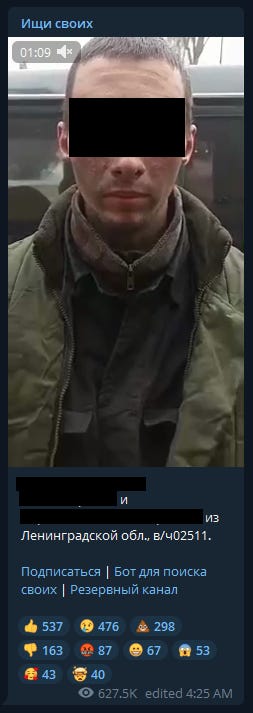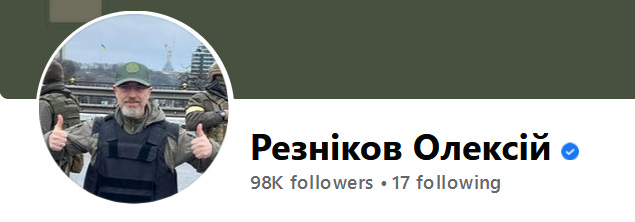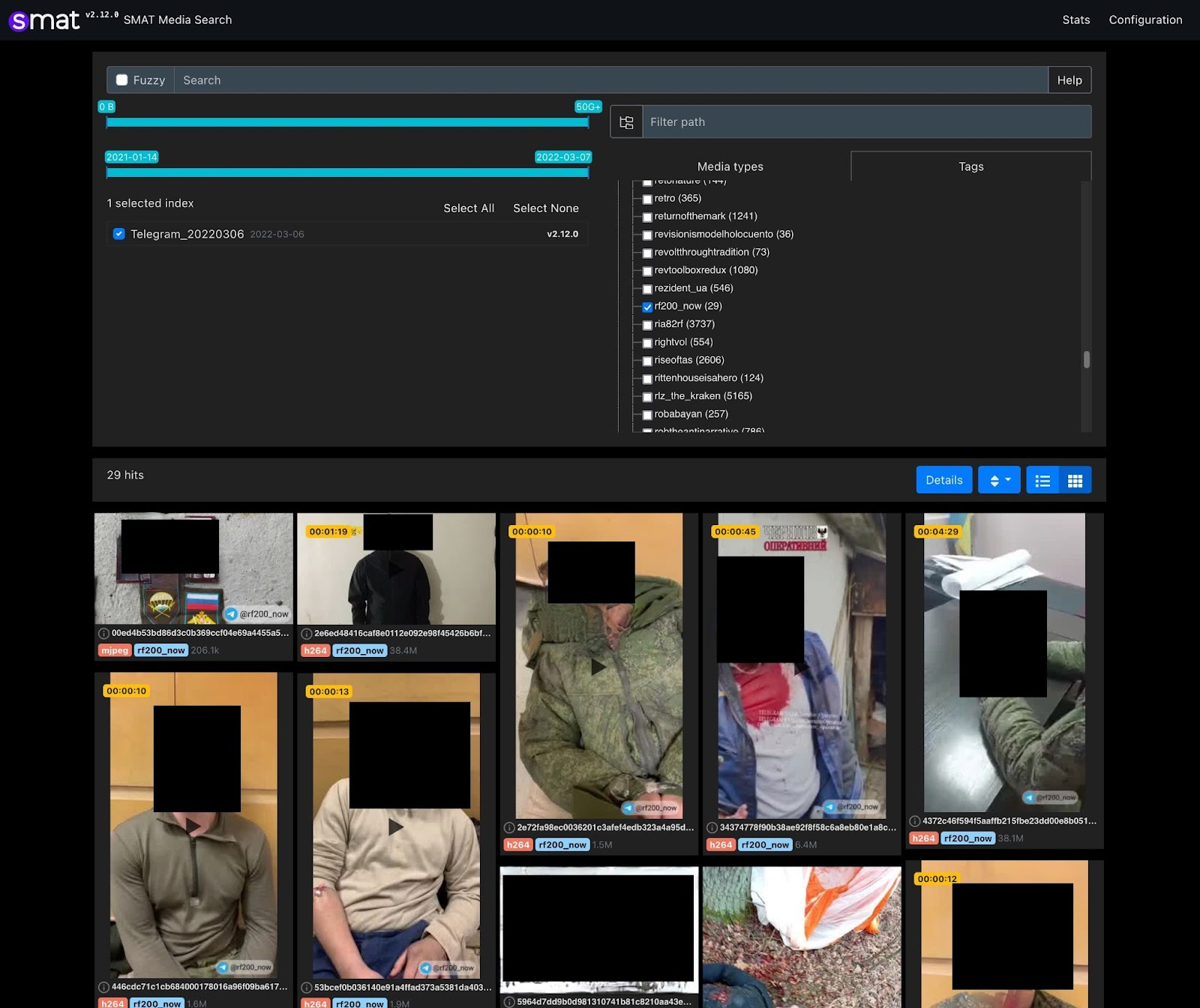Cargo 200 and Psychological Warfare in Ukraine
Open Measures is studying the online psychological warfare tactics of the Ukraine-Russia war, including the term “cargo 200”
TLDR
Using Open Measures’ Telegram data related to the invasion of Ukraine and as part of our bounty program outlined in our previous post, we have performed an in-depth investigation into a form of emergent cross-platform propaganda surrounding the phrase “cargo 200.” Additionally, we are excited to use this opportunity to begin to highlight some of the network investigation and visualization technology we have been developing.
Background
Since Russia began the invasion of Ukraine on Feb. 24, both countries have been waging an information war in addition to the traditional war. It has been crucial for Russia and Ukraine to outwardly appear strong to keep the morale of their soldiers and citizens high.
The majority of Russians are still in support of the invasion, but protests opposing the invasion have been widespread. This is especially significant for a country where speaking against the government can be dangerous.
As a country with a population of 44 million and a GDP of $155.082 billion compared to Russia’s population of 142 million and GDP of $1702.361 billion, Ukraine is facing a more difficult challenge (via CIA World Factbook). They must not only keep the spirits of their countrymen high, but also gain support in Russia and other countries to stand a chance in this war.
To fight against the more populous and wealthy country, Ukrainians have been aggressively pursuing all possible avenues of support, from obtaining weapons from previously neutral countries to crowdsourcing a cyber offensive to attack critical Russian websites. They also have been drawing sympathy to their cause while demonstrating that they have been doing a good job of defending against the invasion. The posting of dead Russian soldiers has provided proof to the world that Ukraine has been successfully defending their country. Days into the invasion, Putin had still not acknowledged that he had lost troops.
After capturing or killing Russian soldiers, the Ukrainian government has been publicly posting images of the soldiers and their government-issued IDs. Ukraine is saying that they’re doing this to help Russian families find their loved ones, but this also helps them demonstrate that they have been successfully defending against the invasion.
One week into the invasion, Russia finally acknowledged that they had suffered loss of troops. It had become much more difficult for them to continue denying that they had suffered losses after photographs of deceased Russian soldiers began circulating over Twitter, Telegram, and other media platforms.
Origins of the Phrase “Cargo 200”
In the USSR’s Order No. 200 during the the country’s Soviet-Afghan War, a deceased soldier’s cargo weight was set at 200 kg. Since then, “Cargo 200” has been used to refer to deceased Russian soldiers by both opponents of Russia and the Russian military themselves.
For example, it was reported in 2018 that Russian vans bearing the words “cargo 200” were crossing the Ukraine-Russia border during a conflict in Donetsk.
Due to the term’s association with defeated Russian soldiers, the Ukrainian Ministry of Internal Affairs has been using “cargo 200” for media accounts used to post the photographs and videos of KIA (killed in action) soldiers and POWs (prisoners of war).
Below is a graph displaying the frequency of the term “Груз 200” (Russian/Ukrainian for “Cargo 200”) on the messaging service Telegram in the past year.
Platforms
With the goal of increasing morale in Ukraine and decreasing it in Russia by demonstrating military success, the Ukrainian Ministry of Internal Affairs created the Cargo 200 campaign. The campaign has primarily been gaining attention on Telegram, but they also have a website, a YouTube channel, and a Twitter account. Here’s a quick look at their various platforms.
Telegram
rf200_now
On Feb. 26, 2022, Виктор Андрусив (Victor Andrusiv) and other employees working for the Ministry of Internal Affairs created the “rf200_now” Telegram channel to share photographs and videos of Russian KIA soldiers and POWs. As of March 18, the channel has over 865,000 subscribers. The first post in the channel was on Feb. 26 at 12:30 GMT (below). It is a video of two POWs answering questions.
rf200_info_bot
Linked in the description of the “rf200_now” channel, the Telegram channel “rf200_info_bot” is a way to request information about POWs and KIAs. When you click on the channel link, the [/start] command is executed and a few lines are output with instructions on how to start using the bot.
After a name is provided, other information is requested, such as an email address, Viber, Telegram, or WhatsApp. The questions asked by the bot are similar to the ones asked on the Google Form linked on the 200rf[dot]com site.
Interestingly, the “rf200_now” channel reported attacks on the bot in the below post from March 8.

Website
There is also a website with the domain name 200rf[dot]com. It contains eight embedded YouTube videos, a link to the “rf200_now” Telegram channel, a Google Form, and an email address (info[dot]russia.2022[at]gmail). Though some of the links on the site have been updated, they have not added additional embedded YouTube videos beyond the originals posted on Feb. 27.
The website was first released on Feb. 26, two days after the invasion began. From the Wayback Machine’s results for 200rf[dot]com, we can see it was first archived on Feb. 26 at 18:37:22 GMT.
Google Form
In the screen capture of the 200rf[dot]com site, there is an button linking to a Google form that Russians can fill out to request information about relatives who went to Ukraine. This is similar to the “rf200_info_bot” Telegram channel.
YouTube
The Cargo 200 YouTube is less active and less frequently followed than their Telegram, but as of March 18, they still have 5,640 subscribers and over two million total views on their videos. Their first video was posted on Feb. 27 at 18:50:30 UTC.
In that video, Виктор Андрусив (Victor Andrusiv), who is an advisor to Ukraine’s Minister of Internal Affairs, says that they created the 200rf[dot]com website for Russian families to find their loved ones.


Twitter
The Cargo 200 Twitter is also significantly less followed than the Telegram, with only ~2,500 followers as of March 13, 2022. They made their first post on Feb. 27, 2022, at 12:28 UTC.
Rather than posting incrementally, this account has been posting images and videos in big batches. For example, there were no posts from March 4-6, but dozens were posted on March 7. After that, no additional posts were made until March 12. This is very different from the Cargo 200 Telegram, where many posts are made each day.
Telegram Content & Narrative Analysis
With over 865,000 subscribers on Telegram and more than 800 posts, 50 of which have over 1,000,000 views each, the Ukrainian government has successfully created a far-reaching, carefully created campaign. However, the practice of uploading images and videos of POWs is controversial, with some arguing it is a violation of the Geneva Conventions.
Ukraine has been seeking to decrease the morale of Russian soldiers and citizens while encouraging surrender and civil unrest. They also are trying to gather sympathy and gratitude for the Ukrainian cause. In this section, we will examine how the Ukrainian government has used the Cargo 200 Telegram account to further these goals.
Inspiring Fear in Russian Soldiers and Their Families
As a phrase originally used to refer to a dead Soviet soldier, Cargo 200 is terrifying for Russians – see the below Telegram post in the force3ua channel on March 7 for an example of Cargo 200 being used colloquially.
As of March 16, the Cargo 200 Telegram has posted 634 photos and 321 videos. Though some of the posts are infographics and other invasion-related news, almost all are photos and videos of the Russian soldiers or their government-issued identification (if their bodies are unrecognizably damaged).
The Cargo 200 Telegram account has posted dozens upon dozens of dead bodies to substantiate Ukrainian claims of significant Russian casualties, which cast doubt on Putin’s claims that he hadn’t lost any soldiers. On March 2, one week into the invasion, Russia finally put out their first casualty estimates – 498 dead and 1,597 wounded.
The Cargo 200 Telegram has also been posting pictures of the Russian soldiers alive and happy before they were killed in the invasion. Seeing the soldiers as the young, whole men that they were helps Ukraine further villainize the Russian government for sending them to fight and die in Ukraine.
Not many of the Russian soldiers have a cell phone with them in Ukraine, so they likely can’t see the Cargo 200 campaign; a significant number of Russians do have Telegram installed (61% according to a 2021 Deloitte survey), however, so they could view the “rf200_now” channel if they wanted.
The Russian government can attempt to block websites in Russia, but as long as Russians are allowed to use Telegram, the government cannot block specific channels like “rf200_now.”
Incentives to Surrender
The Ukrainian government has offered five million rubles and full amnesty for Russian soldiers that surrender. In a Facebook post, Резніков Олексій (Oleksii Reznikov), the Minister of Defense of Ukraine, addressed the Russian soldiers and officers in a Facebook post on Feb. 28.
Below is an English translation of his post (which he provided):

As further incentive to surrender, the Cargo 200 Telegram channel has been emphasizing that they treat their captives well. When the captive is injured, they are given hospital beds and bandages. Most of the captives also appear to not be bound with ropes or chains and are not in prison cells.
They also have been posting videos of the Russian soldiers calling their parents, which provides further indication that the captives are treated well and do not have to fear surrendering. This helps garner support for the Ukrainians too, because in these videos, they appear to be treating POWs of the invading, aggressor country with respect.
In the below video posted on the Cargo 200 Telegram, a POW calls his mother and cries when she says she wants him to come home. He tells her the entire battalion died and that she needs to contact the other mothers. He also says that the Russians are not properly taking care of the bodies of the fallen and are killing the wounded.
Appealing to the Relatives of Russian Soldiers
In addition to giving the Russian POWs phone calls to family members, the Ukrainian government has also been actively offering to help Russian families who are seeking information about their relatives involved in the invasion. One way they have been doing this is by posting unit numbers of KIA or POW Russian soldiers.
The families of those sent to invade Ukraine are afraid, with one mother of a prisoner of war asking, “Whose door should I knock on to get my child back?” On March 3, the Ukrainian government told Russian mothers that they could come to Kiev to pick up their captured sons.
Usually POWs are exchanged, so the Ukrainians offering to freely give back POWs if their mothers came to pick them up can be read as a strategic move to make Russian families feel gratitude for Ukraine’s generosity.
Cross-Channel Analysis
The “rf200_now” channel operates in a diverse Telegram ecosystem of both pro-Ukraine and pro-Russia channels. This creates an opportunity for pro-Kremlin channels to dispute the content shared in “rf200” in order to defend their side of the information war.
The opposite also occurs: We observed instances where pro-Ukraine channels re-amplified “rf200” content in order to extend the reach of their mission. For this analysis, we analyzed Telegram channels related to the conflict with political stances labeled (pro-UA, pro-RU, etc.) in our public Google sheet.
We explore both of these situations using Open Measures’ real-time streaming network database of Telegram metadata.
Russian Propaganda Channels Deny Losses
The popular pro-Russia disinformation channel “Warfakes”, as reported on by DRFLab, has been disputing the legitimacy of the content posted in “rf200_now.”
In the below post on Feb. 26, Warfakes asserted that the reports that Russia had lost soldiers were false. Five days later, Putin would report that 498 Russian soldiers had been killed so far in the invasion.

Media Sharing
To begin, we investigated instances where the media originating from “rf200_now” spread into other Telegram channels. As mentioned above, the content shared in “rf200_now” is typically evidence of Russian soldiers who are POWs or KIA.
Using the metadata of political stance labels for each channel, we see that most instances of media sharing are across channels we don’t currently have labels for. The second largest instance are channels labeled as pro-UA (Ukraine). There is an instance where a piece of media content was shared in “chvkmedia,” a pro-Kremlin political and military news aggregator channel.

Other examples of media sharing include the dissemination of “rf200” content by both pro-UA groups and weapons archival users. In addition to directly disputing media content, pro-Kremlin actors have spun up copycat channels attempting to misdirect those looking for the original “rf200” channel.

Link Sharing
We also used Open Measures’ emerging Network Graph tool to investigate co-shared links that originated from “rf200_now.” Some examples of these are direct links to the “rf200_now” Telegram channel itself, to the “rf200” website, or to their YouTube channel.
Using stance labels, we can see that messages containing these links were only forwarded to channels that are labeled as pro-UA or that did not have a label at all. Additional research is required to look into whether the unlabeled channels actually have a pro-Kremlin stance.
The figure above shows numbered clusters of messages that were forwarded or posted across channels which contain any links that also appeared in “rf200_now.” For example, message cluster 44 contains messages that contain “200rf[dot]com.” We can see that the 10 Telegram channels that received these messages did not receive any messages containing any of the other links – in other words, their only reference to “rf200_now” was via the website link.
A similar situation is true of the channels in message cluster six, which only received messages that contained a link to the “rf200_now” Telegram channel but did not contain messages with any other link. We suspect this is because the majority of these channels already have subscriber overlap with one another, making direct links to channels unnecessary unless sharing for the first time. We welcome additional research into this.
Conclusion
As the world enters new eras of online and offline warfare, the study of information warfare holds even greater importance. This blog post shows how Russia’s efforts to hide their KIA and POW numbers, alongside Ukraine’s efforts to expose them, has created a new vector of war.
This information war flourishes on fringe platforms like Telegram in ways that could be materially impacting the on-the-ground war. Using emerging technology, we can archive and understand this complex relationship between online and offline harm as well as ask deeper ethical questions about warfare in the modern era in the interest of reducing harm and promoting public safety.
Resources
The majority of this research was conducted using Open Measures’ media server, Network Graph database, and public API.
Please get in touch with us if you’d like to receive access to the media server, where researchers and journalists can sort through up-to-date images, videos, and other content from the frontlines of the war in Ukraine. We also hope to contribute to any archival efforts to document any ongoing war crimes.
The public API makes it simple to query content from “rf200_now” or other channels mentioned in this article.
Lastly, Open Measures has begun building a Network Graph representation of all of our collected data, starting with Telegram. This graph allowed us to quickly find media and links shared by “rf200_now” across all of our Telegram collections.
We now have the ability to do similar analysis for other sites we crawl, including the Eastern European social networking service VK. This system will also give the native ability to build cross-platform relationships.
Other Resources
https://www.deepl.com/en/translator
https://citizenevidence.amnestyusa.org/
https://archive.org/web/
https://www.cia.gov/the-world-factbook/
Identify online harms with the Open Measures platform.
Organizations use Open Measures every day to track trends related to networks of influence, coordinated harassment campaigns, and state- backed info ops. Click here to book a demo.































